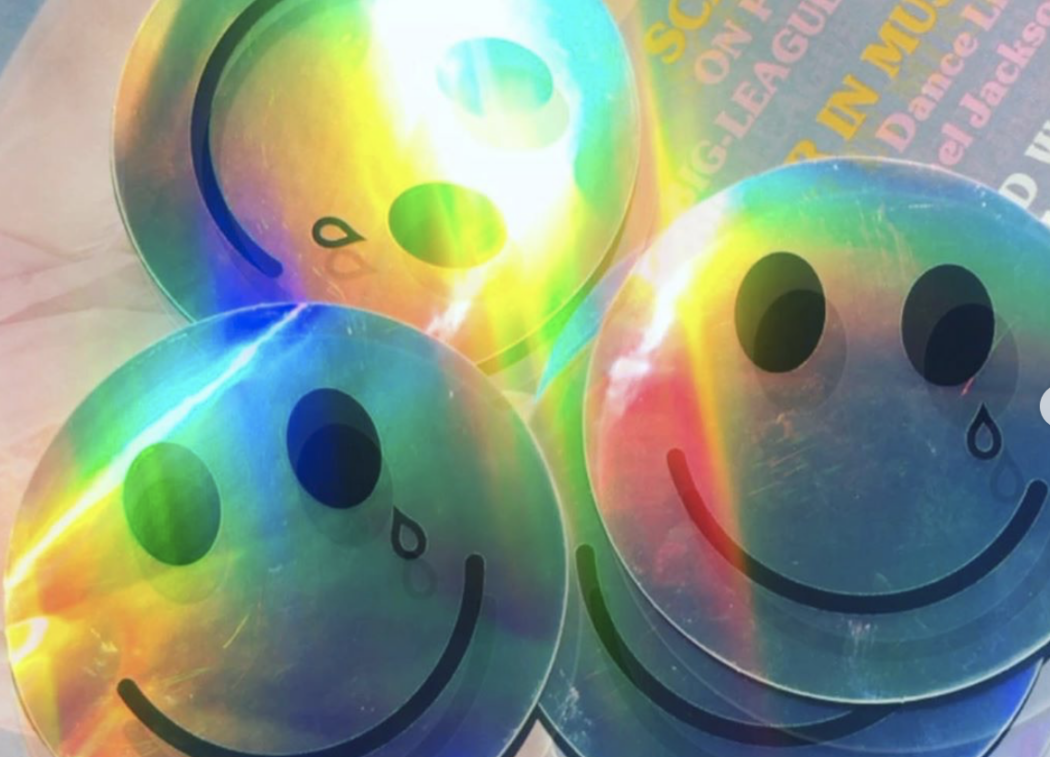As we know, September is National Suicide Prevention Month; where we take the time to build awareness and provide support toward mental health and promoting prevention of the fatal battle that is suicide. The unfortunate truth that this is a very real aspect of human life, reinforces that we as a community have a responsibility of building a strong support system for those who can’t do it on their own.
A relatively overlooked concept surrounding mental health is the idea of toxic positivity.
According to Brittany Wong’s Huffington Post article “What is Toxic Positivity? Why it’s OK to not be OK Right Now” toxic positivity is “the idea that we should focus only on positive emotion and the positive aspects of life […] It’s the belief that if we ignore difficult emotions and parts of our life that aren’t working well, we’ll be much happier. “
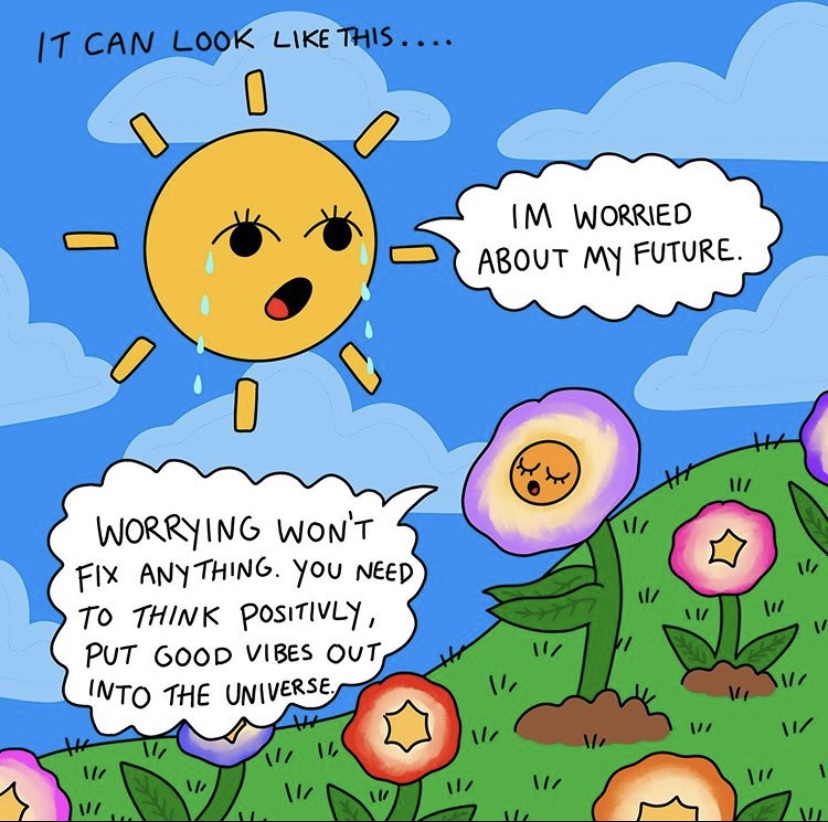
Sarah McDonald, a twenty-five-year-old Australian artist created an Instagram post displaying what exactly toxic positivity is, the harm it can do, and ways to reapproach your responses to be a better listener when handling situations of someone else’s negative emotions.
Emily Nagoski, in her novel, Come As You Are, highlighted how all emotions that we experience as humans need to be understood as neurological cycles that in order to remain a balance, we must allow our emotions to complete themselves. Nagoski continues to explain that in doing this, we practice not suppressing the negative emotions — but allowing them to be felt, recognized and understood.
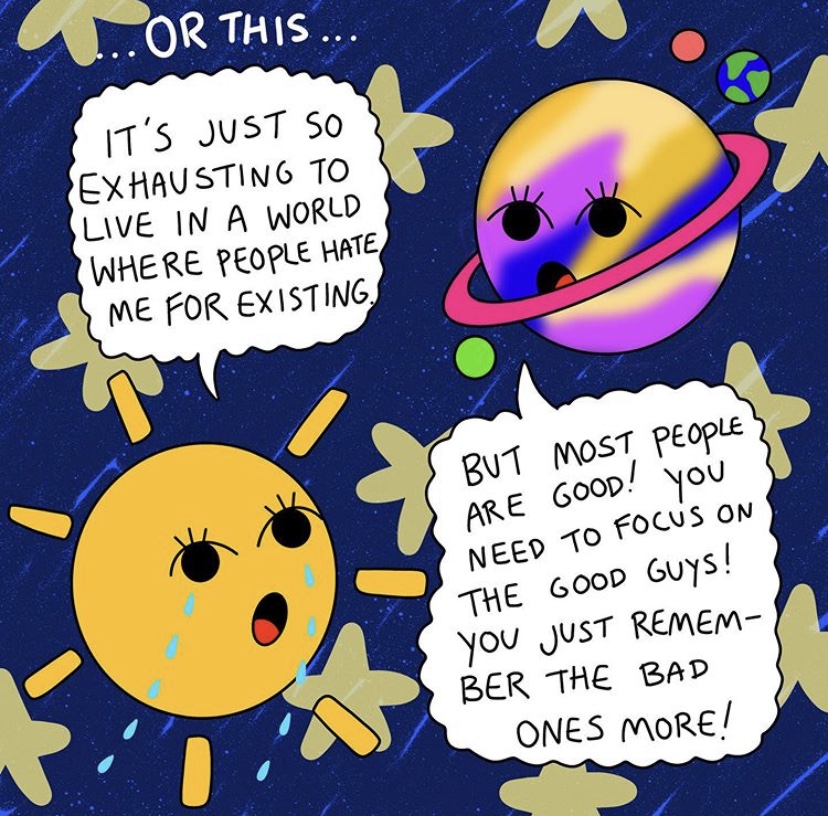
If we reject our bodies from feeling all these emotions, the emotional stress will ultimately convert itself into physical stress, putting our brains and bodies under even more pressure than before. This negative result of emotional suppression is entirely avoidable, but in no way is it simple; addressing and feeling negative feelings is a battle in itself.
If a friend comes to you worried about the unknown factors of their future and your response involves a rejection of that worrying, deeming that it will not provide any help or that they need to think positively instead, you’re essentially deflecting from the feelings of fear and anxiety that the person coming to you approached you without of trust.
Responding to that level of vulnerability with an answer that generally invalidates their negative feelings, may lead to them questioning the seriousness or validity of their own feelings.
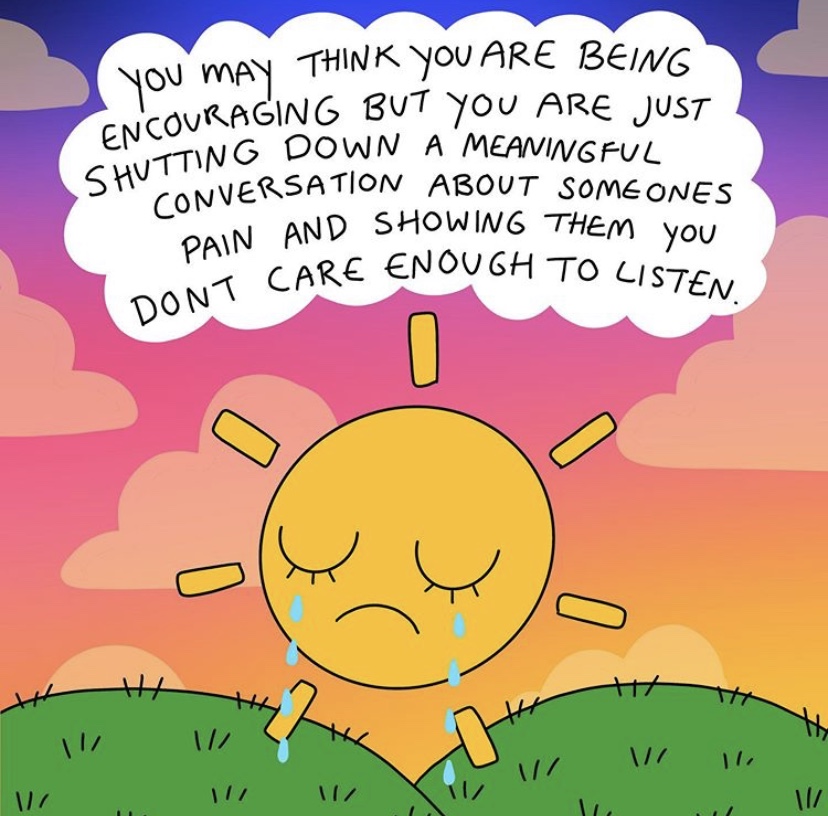
These responses usually have encouraging and positive intent, but in some cases work in the opposite way. They provide a means of distraction from meaningful meta-emotions that are very much normal and justifiable.
Instead of pushing positive feelings in response to someone else’s negative situation, one should attempt to approach your responses by displaying an understanding of concern, frustration or fear that is being described.
Absorbing and displaying an understanding of those feelings, while reinforcing that that person is not alone in feeling those emotions is a great way to build assurance that these negative instances are normalcy among human beings.
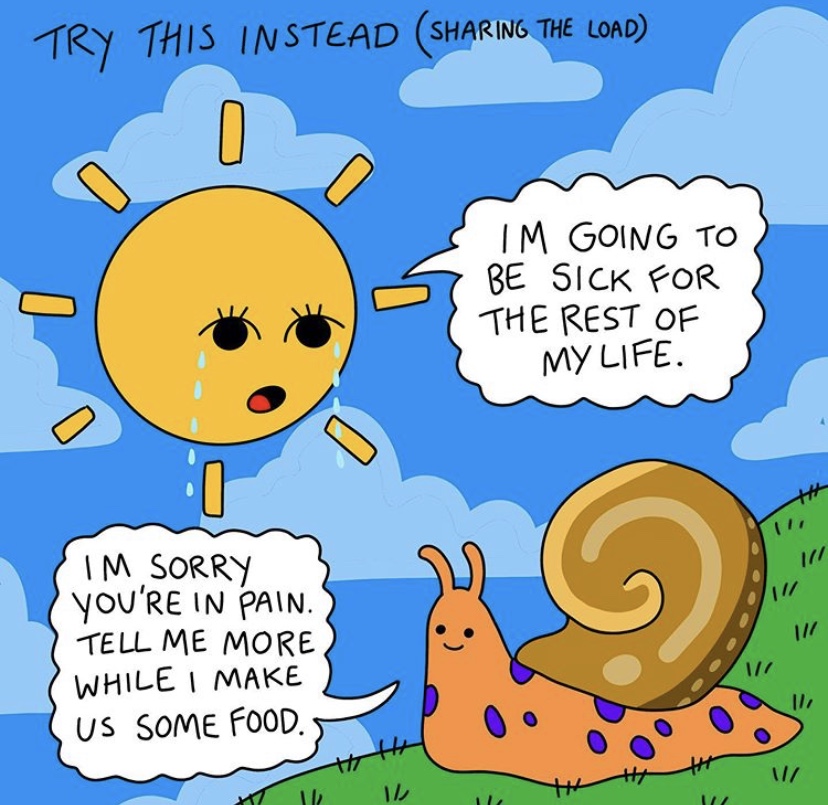
Toxic positivity isn’t a discouragement to be a generally positive person, people who radiate positive are refreshing and provide good energy to be surrounded by; but human minds are very individual to one another, and along with them come to their personal feelings and emotions that require individual care and understanding.
This is just another means of consciousness that we as empathetic humans need to weigh in to continue to support and be there for those who can’t always bring themselves up from their lows.

